Nokia Lumia 1520 Preview
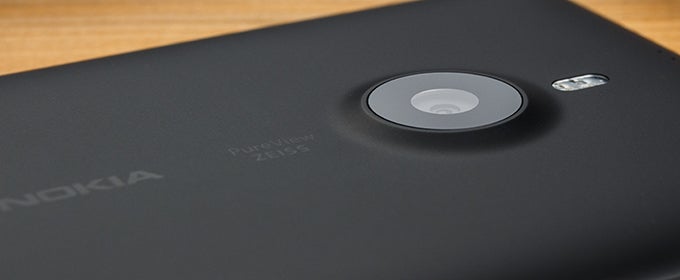
Introduction
The Lumia 1520 takes Nokia’s familiar pillow shape design and stretches it out to its limits. This is the first Nokia phablet, but even if you are used to using large phones the Lumia 1520 is shockingly big.
The large size might make it awkward to hold and carry around, but in turn means that you get to have a gigantic 6-inch 1080p display with you at all times. This new size is also new not just for Nokia, but for Microsoft and Windows Phone as well. The Lumia 1520 is also the first Windows Phone phablet and Microsoft’s platform adjusts to that with more Live Tiles on the screen and more information you can see in one glance.
The Lumia 1520 has more going on than just the screen, though. It also features a very ambitious 20-megapixel PureView camera with ZEISS lens as well as a powerful quad-core Snapdragon 800 chip.
An AT&T exclusive, the Lumia 1520 is coming to the United States on November 22nd, but we already have a preproduction version in our hands and it’s time to take it for a spin and see what we can expect to see in the final device.
Design
There’s no going around the fact that the Lumia 1520 is a ridiculously big device. We ought to warn you about this before getting into any further detail about the design. It barely fits in a regular jeans front pocket and you’d better not have the misfortune to wear skin-fit clothes or pants with small pockets - it simply won’t fit in there. In daily use such a large size looks awkward, but more importantly it makes basic single handed operation a struggle. To its excuse, we ought to mention there actually are even larger phablets out there like the Sony Z Ultra, and the HTC One max nearly matches it in size.
With all this in mind, we have to admit that the Lumia 1520 is one sleek, svelte smartphone for its size. The slim body is made out of polycarbonate and it does not feel cheap in any way. With its very slight curves and slight pillow shape, it’s a typical Nokia design and it looks great. The phone comes in a matte black and yellow, and glossy red versions. It’s 8.7mm thin, but weighs nearly half a pound. All this weight is distributed unevenly as the bulkier top overweighs the bottom where you hold the device, so you should be extra careful when you hold the device with one hand - a few times we almost dropped the device as it started tipping over.
Right below the screen there are the three standard Windows Phone capacitive navigation keys that look strangely small on such a large phone. Physical keys are made out of plastic and luckily all within easy reach and very clicky, easy to press.
Display
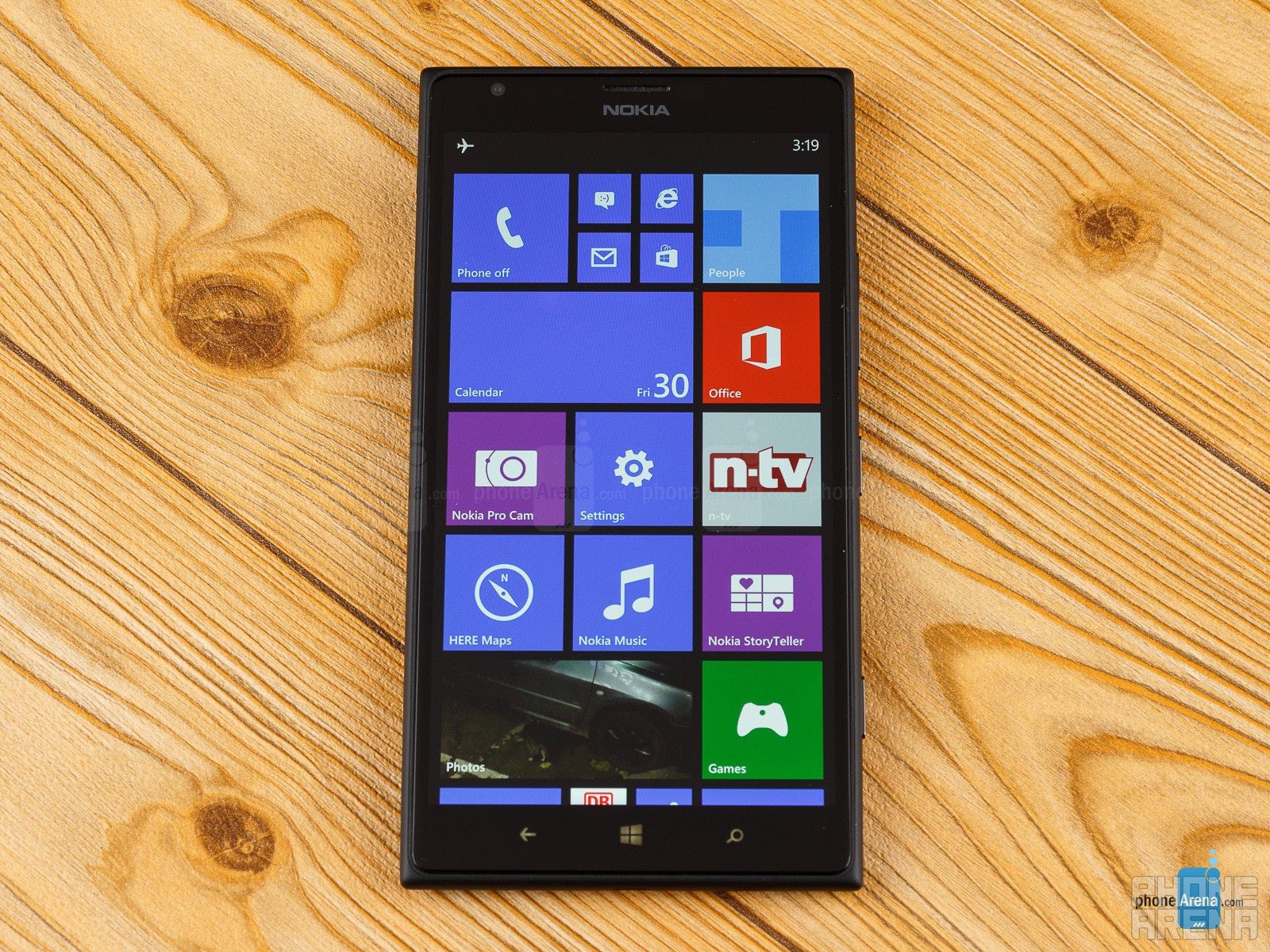
The size is an impressive full six inches, larger than most phablets out there, and our initial impressions with the non-final device that we have is that it’s a nice, vivid screen that performs very well in the outdoors. On board are Nokia’s ClearBlack technology, essentially a polarizer that reduces reflections and contributes to the outdoor viewing experience, super sensitive touch so you can use this with your gloves on in the winter, and Gorilla Glass 2 screen coating.
We love the option to manually adjust screen color temperature and saturation on the Lumia 1520. You can pick overblown colors that look unreal yet impressive, or you can go for a more realistic, natural tones (that we would recommend). Stay tuned for our final review in a few days when we’ll give you much more detail about the screen’s actual quality and color reproduction.
Interface and Functionality
The Nokia Lumia 1520 is the first Windows Phone phablet and it is a great example of how the platform makes use of the extra screen space. You can now fit more, much more Live Tiles and text is larger everywhere. While smaller Windows Phones fit 4 small icons, here you can get 6 small tiles in a single row on the interface.
The Lumia 1520 runs on the latest Windows Phone 8 Update 3 (aka GDR3) and it also has the Nokia Black update thauetooth 4.0 LE support. We are glad to see the most up-to-date version of Windows Phone here. Update 3 adds a lot of small improvements like custom notification tones, rotation lock and a new Driving mode. To the untrained eye, though, it’s hard to see any difference between this latest version and earlier Windows Phone 8 versions. Live Tiles still come in three sizes (we really wish there was an even large tile size that would fit an entire horizontal block on the Lumia 1520), the app drawer is still a vertically scrollable list of names, and there’s still no notification center.
Customization options on the Windows Phone 8 Lumia 1520 are limited to changing Tile Sizes and colors. You can also have at-a-glance clock on the lock screen and double tap to wake up the phone, but all these draw additional battery.
We like the selection of first-party apps on Windows Phone. Having mobile Office right out of the box is a huge plus. Since this is a Nokia phone, you also get some very neat applications that other Windows Phone handsets do not have. Nokia Drive with free offline turn-by-turn navigation and Nokia Music with its great free music streaming option are on board.
Basic functionality is also well covered with a phone app that integrates your social news circles (Facebook and Twitter) and contacts, and for texting you have an extremely large version of the stock keyboard that is a joy to type on.
Processor and Memory
The Lumia 1520 is the first Windows Phone device to ship with a quad-core processor. Under its hood is the latest Qualcomm Snapdragon 800 system chip, the same piece of silicon you can find on the current crop of Android devices like the Samsung Galaxy Note 3. It’s a 28nm architecture allowing the quad-core processor to hum at up to 2.2GHz speed, and it comes with Adreno 330 graphics and 2GB of RAM.
Our initial experience is positive as everything seems to move quicker. Animations however still take up way too long often times and compared with Android and iOS nearly everything takes a bit longer on Windows Phone, even on this fastest representative of the platform. We’d still reserve our ultimate judgment for the final review, though.
Internal storage comes at the fairly generous 32GB and it’s also expandable via microSD cards of up to 64 gigs, so it should be enough to satisfy even the most storage-hungry users.
Internet and Connectivity
Accessing the web on a Windows Phone device happens exclusively via Internet Explorer and the Lumia 1520 is no exception. We don’t like the lack of choice, but luckily mobile IE is a good browser on its own and with 4G LTE on board surfing the web is a pleasure.
The first Nokia phablet ticks all connectivity boxes: dual-channel Wi-Fi, Bluetooth 4.0 with LE support (courtesy of the Nokia Black update), NFC and GPS with Glonass.
You should keep in mind that the Lumia 1520 is an AT&T exclusive in the US and it won’t support 4G LTE bands on other carriers.
Camera
The 20-megapixel PureView auto-focus camera on the Lumia 1520 comes with a dual-LED flash (no Xenon here) and protrudes just slightly on the back - not so much as to be in the way, but enough to make it clear to passers-by that it’s a serious cameraphone you’re holding. It indeed is one of Nokia’s strongest camera efforts with a larger than usual 1/2.5” (25mm2) sensor, backside illumination and optical image stabilization. Still, the Nokia Lumia 1020 for instance features a more than twice as large 1/1.5-inch (58mm2) sensor, while the also 20-megapixel Sony Xperia Z1 has slightly larger 1/2.3” (28mm2) sensor.
As the Lumia 1020, you can choose to capture full-res images along with smaller 5-megapixel images for quick social sharing, or just the smaller 5MP version. These are no regular 5-megapixel photos, though. Instead, Nokia combines multiple pixels from the original full-res image to achieve superior single pixel quality in the final 5-megapixel image.
The 1520 ships with the Nokia Pro Cam application that we first saw on the Lumia 1020 and it’s the same neat interface with dials for easy adjustments for white balance, manual focus, ISO, shutter speed and exposure.
It’s worth underlining that the Lumia 1520 is one of very few smartphones to support zooming without hugely destroying the image quality. You can zoom in around 2x without real damage to the image, but you still lose the benefit of oversampling that you get when zoomed out. Nokia has also promised bringing RAW image support for this handset so you can really get serious with your photoediting.
You also have plentiful options for video capture as you can pick between 1080p and 720p and supported framerates of 30, 25 and 24fps. Quite neatly, you can zoom up to 2x times in 1080p video and up to 3x in 720p without losing much in detail. Traditional smartphones in contrast use digital zoom that is highly destructive for the video. Sound recording is superb on the Lumia 1520. The handset features four HAAC (High Amplitude Audio Capture) microphones that are able to record a higher sound amplitude. That should come particularly handy for club and concert goers as recordings there will turn out actually completely usable and much cleaner than on a regular smartphone that at high volumes records almost useless crackling sounds.
The phone also features a 1.2-megapixel camera for video conferencing and selfies.
Multimedia
Media is what phablets are made for and truly shine, and the 6-inch Lumia is just that - a multimedia powerhouse. With great codec support, we were able to play all video we threw at it with ease and the experience watching short clips or even longer movies is great on such a large display. It’s really a shame there is no YouTube application baked in and you need to take a trip to the Windows Phone Marketplace for a decent YouTube client like MetroTube.
There are two music apps on the Lumia 1520 - the Xbox Music + Videos app and Nokia Music. Both do a great job with organizing your music and doing it all in a visually pleasing way with large screen-wide album art, but we like Nokia Music better for its additional functionality. The ability to stream music free and even save online playlists for offline playback is great, and if you want to get rid of the limitations (you can skip only 6 songs in an hour), you can opt for the paid version of the service as well. For music output however we expect a bit more than a single loudspeaker on such a large phone. Still, that’s what you get. We’d abstain from a final judgment about the actual quality, though, as Nokia might improve it in the final unit.
Expectations
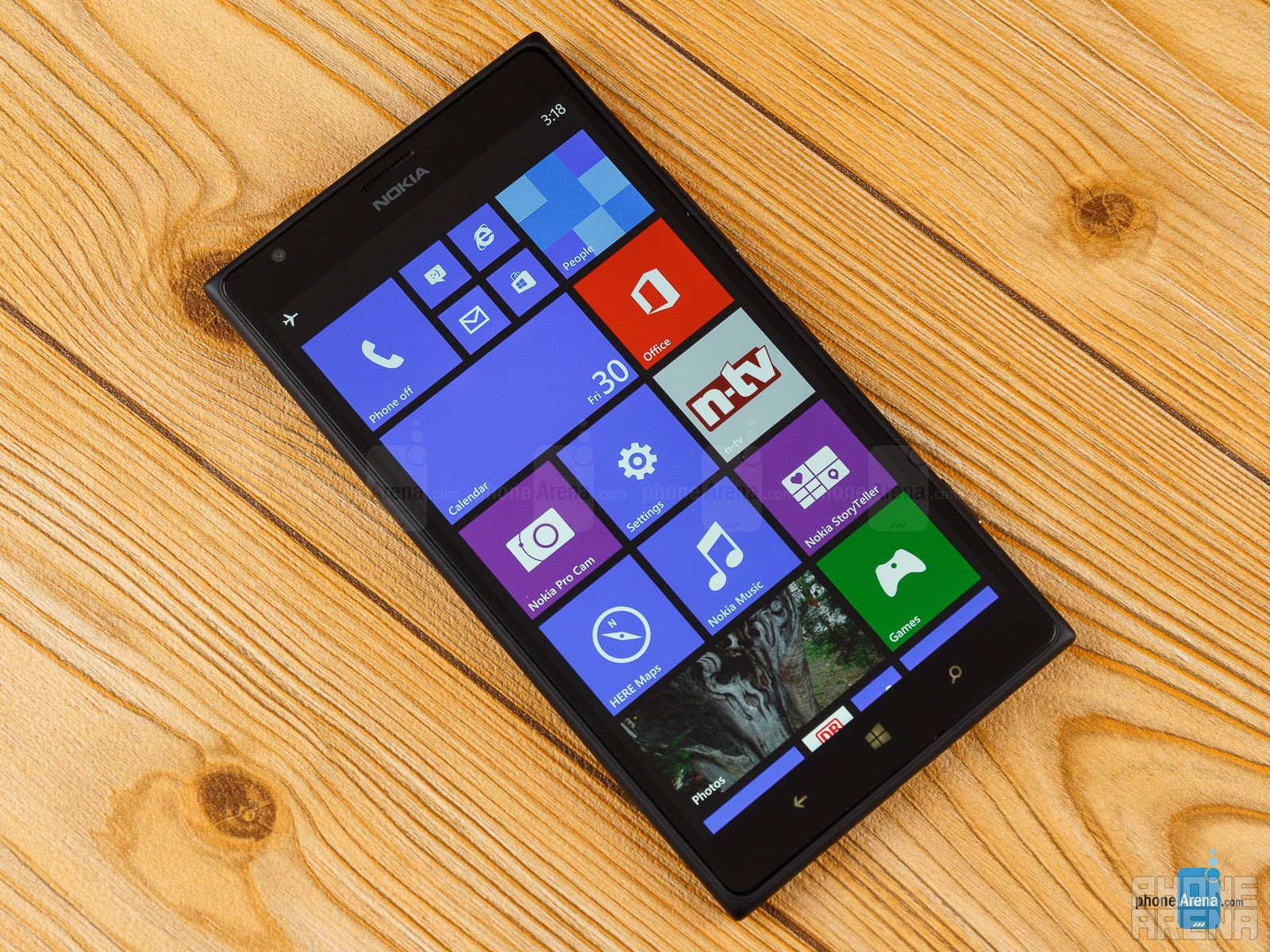
If you can shake that shock off, you’d probably appreciate the overall performance and the camera, all of which left great initial impressions on us.
Still, right now, the Lumia 1520 looks like a niche product. Something for the gamers and the movie buffs, those on a long daily commute, but not really something that would appeal to a lot of people.
The first Nokia phablet is coming as an AT&T exclusive for $200 on a two-year contract. Both Microsoft and AT&T are trying to push this first of a kind device with freebies. Microsoft gives away a $70 of marketplace credit, a free copy of Halo: Spartan Assault, and a flip cover, while AT&T bundles it with $20 of marketplace credit, 50GB of free cloud storage, and also a copy of Halo.

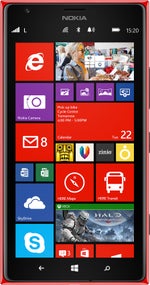

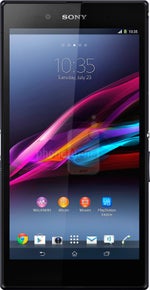






















Things that are NOT allowed: